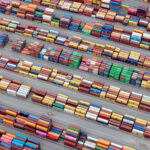Alaska’s permafrost is melting and revealing high levels of mercury that could threaten Alaska Native peoples.
That’s according to a new study released earlier this month by the University of Southern California, analyzing sediment from melted permafrost along Alaska’s Yukon River.
Researchers already knew that the Arctic permafrost was releasing some mercury, but scientists weren’t sure how much. The new study — published in the journal Environmental Research Letters — found the situation isn’t good: As the river runs west, melted permafrost is depositing a lot of mercury into the riverbank, confirming some of scientists’ worst estimates and underscoring the potential threat to the environment and Indigenous peoples.
Mercury is a naturally occurring substance, but it can also be man-made. When ingested, the silvery metal can wreak havoc on the neurological system. Pregnant women and children are especially at risk, which is one reason why many governments issue health limits on what types of fish people should eat when they’re pregnant.
Previously, researchers thought that thawing permafrost released a minimum of 40 kilograms of mercury per square kilometer, or up to 150, a huge range that left a lot of room for uncertainty. The new study found that the minimum mercury release is actually twice as high, spanning from around 86 kilograms per square kilometer to as much as 131, and the method of confirming this by sifting through soil makes scientists more confident in their assessments.
Josh West, a professor of earth sciences and environmental studies at USC and one of the study’s co-authors, said the impending mercury exposure is highly concerning.
“Permafrost soil contains more mercury than all the other soil on the planet, plus all the oceans, plus the atmosphere,” he said. “So there’s an enormous amount of mercury sitting in these frozen soils where climate change is happening faster than the rest of the world.
“It has that sense of a bomb that’s going to go off,” he added.
Scientists analyzed sediments in sandbars and riverbanks near two villages in the northern part of the Yukon Village Basin, Beaver and Huslia. The research team included not only USC and university partners but also the Yukon River Inter-Tribal Watershed Council, an Indigenous nonprofit representing dozens of First Nations and tribal nations dedicated to protecting the Yukon River Watershed.
West cautions that there’s still a lot unknown about the situation: Researchers are continuing to look into whether the mercury that’s released is turning into methylmercury, a toxic version of the substance that can cause brain damage if consumed. They’re also looking into whether the permafrost melting into the Yukon River is causing mercury to enter the fish that nearby residents, including Native peoples, rely on to eat. Whether that’s actually occurring remains unclear, and underscores the need for more data.
But what is known is that the Arctic is warming four times faster than the rest of the planet, and the thawing permafrost is already forcing some communities to relocate.
“Water is life for Indigenous people in Alaska and when permafrost thaws it just creates a slew of problems,” said Darcy Peter, who is Koyukon and Gwich’in Athabascan from Beaver, Alaska, and works on climate adaptation at the Woodwell Climate Research Center. Diminishing salmon runs are already a problem in the Yukon, in part due to warmer waters from climate change. Peter says her people haven’t seen salmon for several years. “When we do fish the last thing we want to be worried about is high mercury levels.”
Mercury poisoning among Indigenous peoples is already a global problem.
In Canada, First Nations peoples have been reeling from the harmful effects of mercury poisoning in their fish, where the pollution has been linked to high rates of attempted suicide among youth in Grassy Narrows First Nation. In the Amazon, the largest Indigenous tribe called the Yanomami have suffered high levels of mercury due to illegal gold mining nearby. The problem is so well-documented that there’s ongoing international advocacy to get more Indigenous representation at the United Nations’ annual convention on mercury.
Unfortunately, Alaska is no exception. A 2022 study concluded, “Arctic Indigenous Peoples are among the most exposed humans when it comes to foodborne mercury,” and emphasized the importance of collaborating with Indigenous peoples on research.
Mercury pollution doesn’t only cause health problems or risk discouraging Indigenous fishing practices. It also is another way climate change threatens the traditional cultural practices that Native people have engaged in for millennia. It’s a threat to the cultural identity of Native peoples, not just their health and physical existence.
“Where I’m from in Beaver there’s no grocery stores. We build our own cabins. We haul our own water. We hunt our own food,” Peter said. “We definitely feel it on a physical scale, an emotional scale, and a financial scale – the decline of salmon and the presence of mercury on the Yukon River.”
This story was originally published by Grist with the headline Thawing Alaskan permafrost is unleashing more mercury, confirming worst fears of scientists on Aug 26, 2024.
“It has that sense of a bomb that’s going to go off.” Global Indigenous Affairs Desk, Health, Indigenous Affairs Grist







